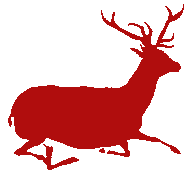


Prehistoric Aragon









| The terrritories that make up present-day Aragon were already populated in the Lower Paleolithic period, that is, before 100,000 B.C. However the first human remains discovered in the region are the molars of a Neanderthal man in La Cueva del Moro, in Gabasa, Huesca province; and the jawbone of a Cromagnon man in the caves of las Graderas de los Molinos (Teruel) which are only 5,000 years old.
The inhabitants in the Lower Paleolithic period were semi nomadic hunter-gatherers who occupied the river terraces. They used fire and percussion-made stone tools similar to the bifaces found in the terraces at Guadalaviar (Teruel). In the Middle Paleolithic period (approx. 60,000 B.C.), the tools were of a smaller size, such as the ones found in Eudoviges (Alacon, Teruel). In the Upper Paleolithic period the Cromagnon inhabitants occupied caves, buried their dead and drew cave paintings of horses in red and hand prints in the same colour or in black. Examples of these can be seen in the Fuente del Trucho (Huesca).Around 10,000 B.C. cave art was of the "Levantine" type, paintings of bulls, goats, horses and boars and human figures appear on many cave walls.  Examples can be seen in Caspe (Saragossa province), the river Vero (Huesca province) and the Teruel region (Cretas, Mazaleon, Valdealgorfa, Santolea, Alacón, Alcaine, Obón and Albarracín). Examples can be seen in Caspe (Saragossa province), the river Vero (Huesca province) and the Teruel region (Cretas, Mazaleon, Valdealgorfa, Santolea, Alacón, Alcaine, Obón and Albarracín).
In the Neolithic period pottery and textiles appeared. Cardial ceramic work (decorated with imprints of cardium shells) has been found in the cave at Chaves (Bastaras, Huesca province), at Costalena (Maella, Saragossa province) and in the Botiqueria dels Moros (Fabara, Saragossa province). Stone was worked by percussion, abrasion and polishing. The settlements were sedentary. Agriculture and domestication of animals made their first appearance. In the Bronze Age, metallurgy stimulated contact between settlements through different commercial routes. A new type of pottery was made with a bell shape known as the campaniform pot. Pilar Rivero |
| InfoGoya es una iniciativa de la Universidad de Zaragoza, patrocinada por la Institución Fernando el Católico y otras instituciones. |